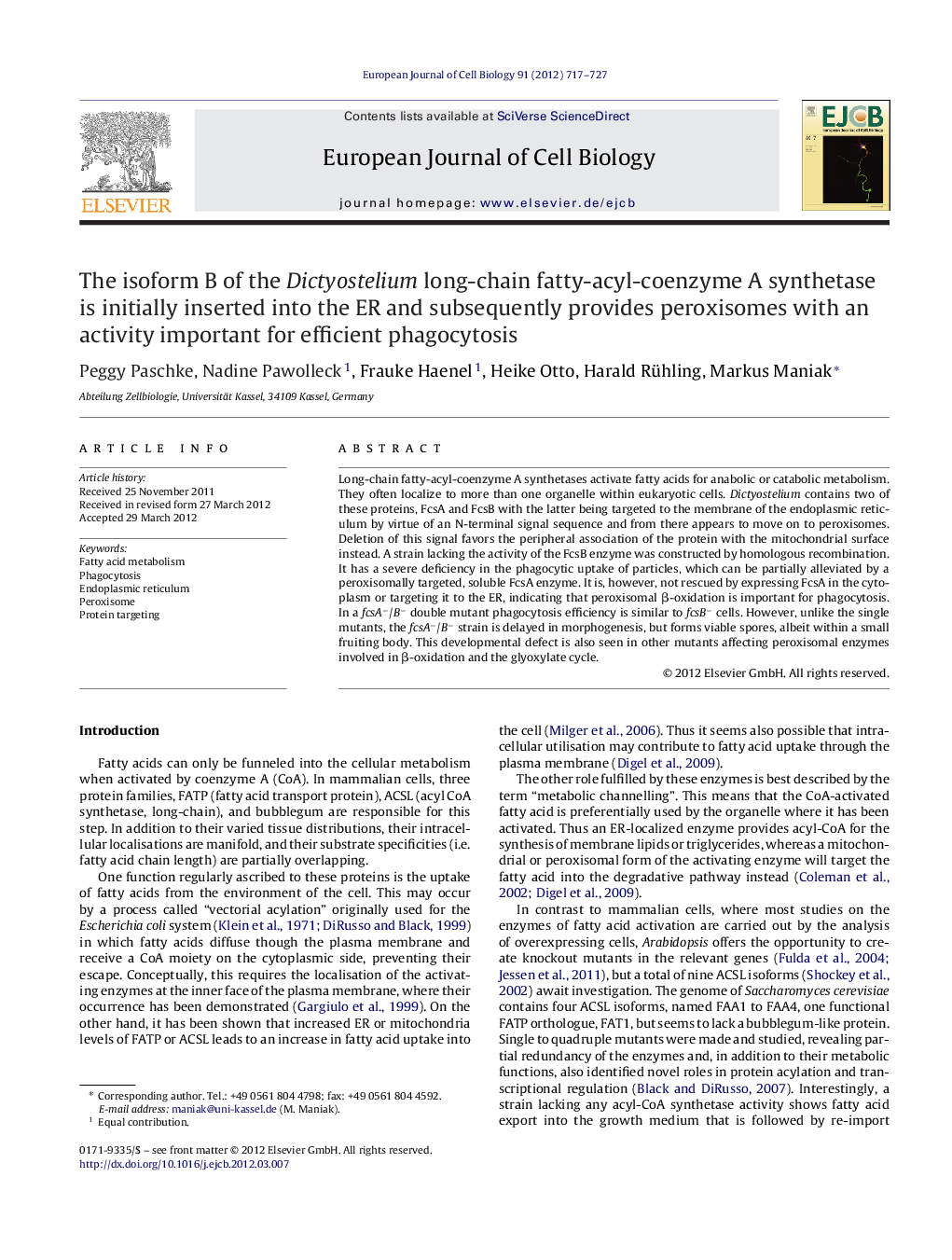| Article ID | Journal | Published Year | Pages | File Type |
|---|---|---|---|---|
| 2178571 | European Journal of Cell Biology | 2012 | 11 Pages |
Long-chain fatty-acyl-coenzyme A synthetases activate fatty acids for anabolic or catabolic metabolism. They often localize to more than one organelle within eukaryotic cells. Dictyostelium contains two of these proteins, FcsA and FcsB with the latter being targeted to the membrane of the endoplasmic reticulum by virtue of an N-terminal signal sequence and from there appears to move on to peroxisomes. Deletion of this signal favors the peripheral association of the protein with the mitochondrial surface instead. A strain lacking the activity of the FcsB enzyme was constructed by homologous recombination. It has a severe deficiency in the phagocytic uptake of particles, which can be partially alleviated by a peroxisomally targeted, soluble FcsA enzyme. It is, however, not rescued by expressing FcsA in the cytoplasm or targeting it to the ER, indicating that peroxisomal β-oxidation is important for phagocytosis. In a fcsA−/B− double mutant phagocytosis efficiency is similar to fcsB− cells. However, unlike the single mutants, the fcsA−/B− strain is delayed in morphogenesis, but forms viable spores, albeit within a small fruiting body. This developmental defect is also seen in other mutants affecting peroxisomal enzymes involved in β-oxidation and the glyoxylate cycle.
